The Importance of Observation
In Permaculture, few things seem to take as high a priority has observation. In fact, it is the first of the twelve Permaculture principles: “Observe and Interact”.
The idea is that Nature is our teacher, and by carefully looking at how it is, we can gather useful data, that we can then explore, try to understand in order to convert it into information that will be useful to you and your system.
Therefore, it becomes a design tool that you keep going back to in order to keep improving on your site.
If you are a doer and like to get things done fast, this might make your heart beat a little faster. See, observation makes you stop. It invites you to do nothing and just be with Nature before you make any new decisions.
This can be slightly annoying if you are in a hurry. For us, it meant we waited almost a year in order to get started, so we could get a sense of the different seasons. The best way for us to cope with it was to focus on our vegetable garden in the meantime. This space, called Zone 1, is more independent of the rest – here order reigns, and you have more control over what is happening. It kept our hands busy while our minds started gathering thoughts and ideas for the overall design.
To observe, you need to set your mind to it. It is seems to be simple, but it is a skill that takes time to develop and ongoing work in progress.
Observation Walk
In our latest walk, I wanted to see what happens in early Winter, during this transition phase. Here, Autumn often feels like a belated Summer, but gradually the temperatures started dropping, and we are now clearly in the Winter.
One of the first things we noticed was how the Nature Succession doesn’t give up. There are many, many, eucalyptus and pine plantations here. These trees keep being cut and coming back with a vengeance, but also the lower layers:
- the Gorse (Ulex Europaeus) is not only growing quickly, but starting to blossom. These nitrogen fixers are bringing back fertility to the soil and covering it so the rain and strong winter winds don’t erode it further.
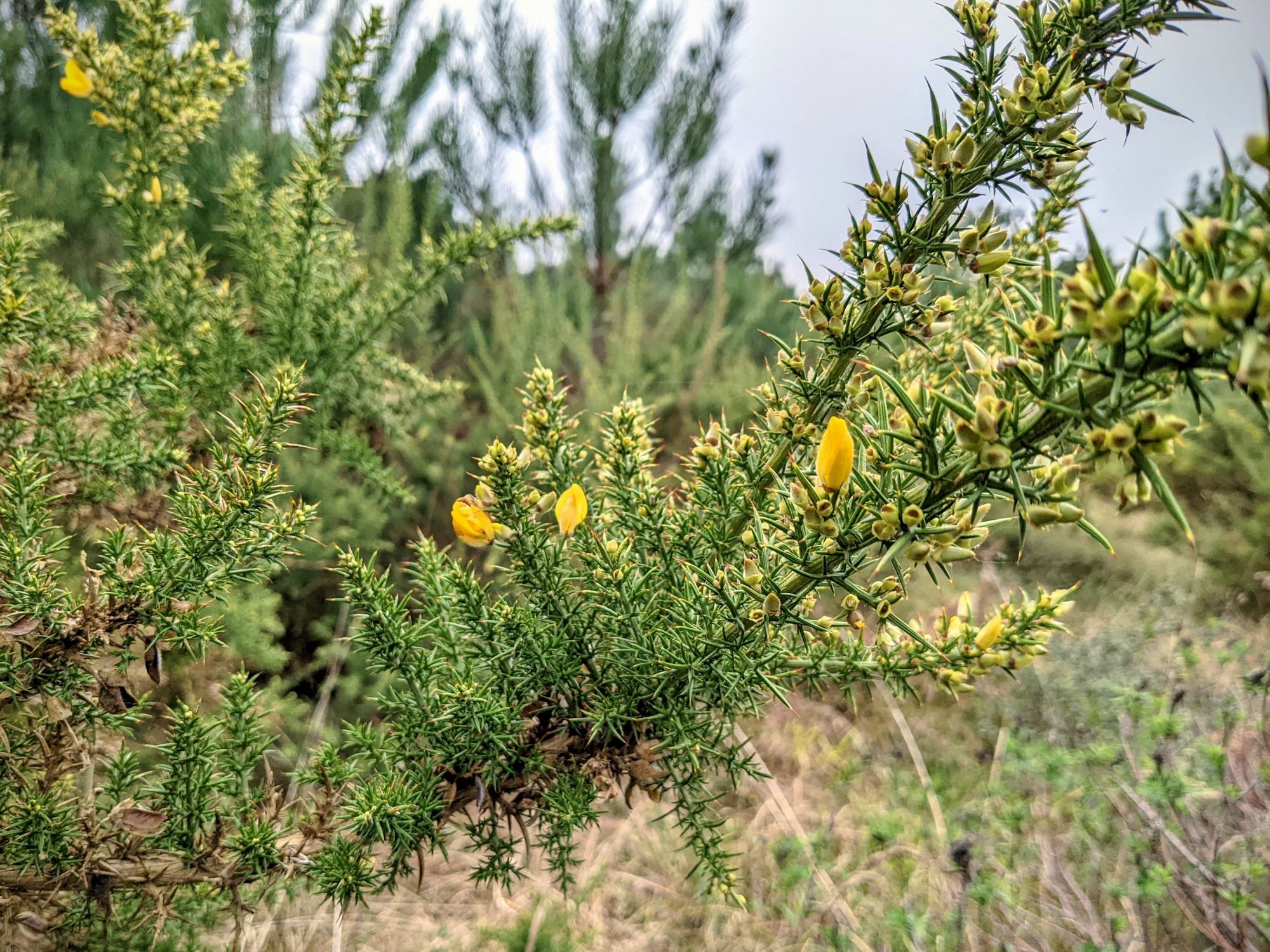
- The Heather (Calluna, Erica sp.), that can grow in these poor sandy soils, is also coming back and blossoming. While it doesn’t grow as quickly as the gorse, it can also take maritime exposure. Both of these plants attract wildlife, support the bees through the winter, and are not disturbed by the acid soils and lack of nutrients.

- Hottentot Fig (Carpobrotus edulis). Although usually found closer to the coast, this plant has made it to the “forest” here. It is also covering the ground, feeding wildlife and preventing erosion.
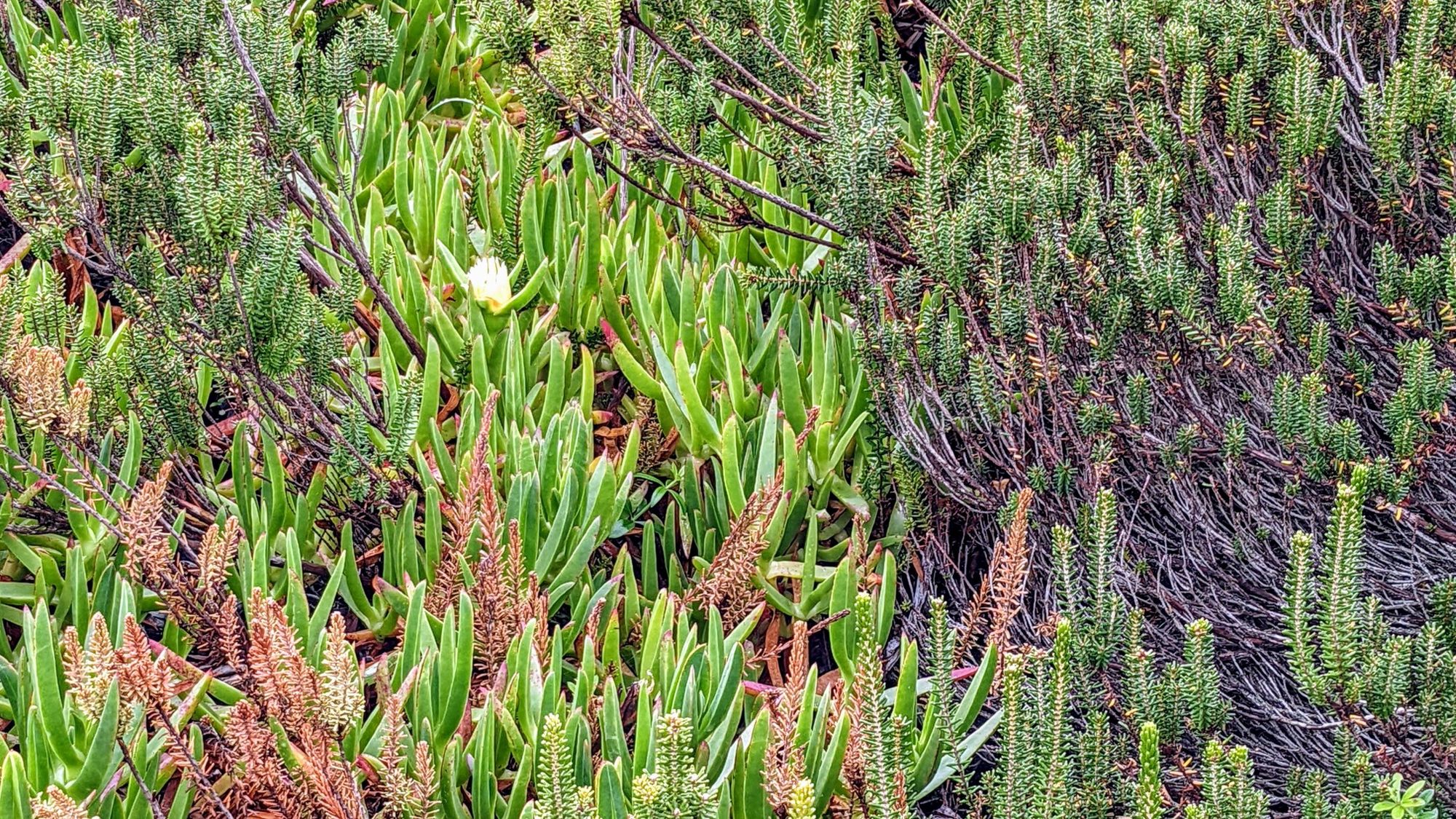
All of these three plants can grow in very acidic, nutrient poor soils and take maritime exposure. Clearly, not a coincidence. The interesting thing is that both the gorse and the Hottentot fig (chorão da praia, in Portuguese) are considered pests and invasive species. In fact, it is illegal in Portugal to plant the Hottentot fig.
Still, the plants are providing the necessary services for Nature to be restored here: a ground layer, covering the ground to prevent erosion and feeding life; a low layer that is also feeding pollinators throughout the winter and finally the gorse, that grows faster and taller, not only attracting wildlife but also providing fertility with the nitrogen it makes available for others plants.
Furthermore, the mushrooms. They are growing everywhere, letting us know there is still much happening under the surface.
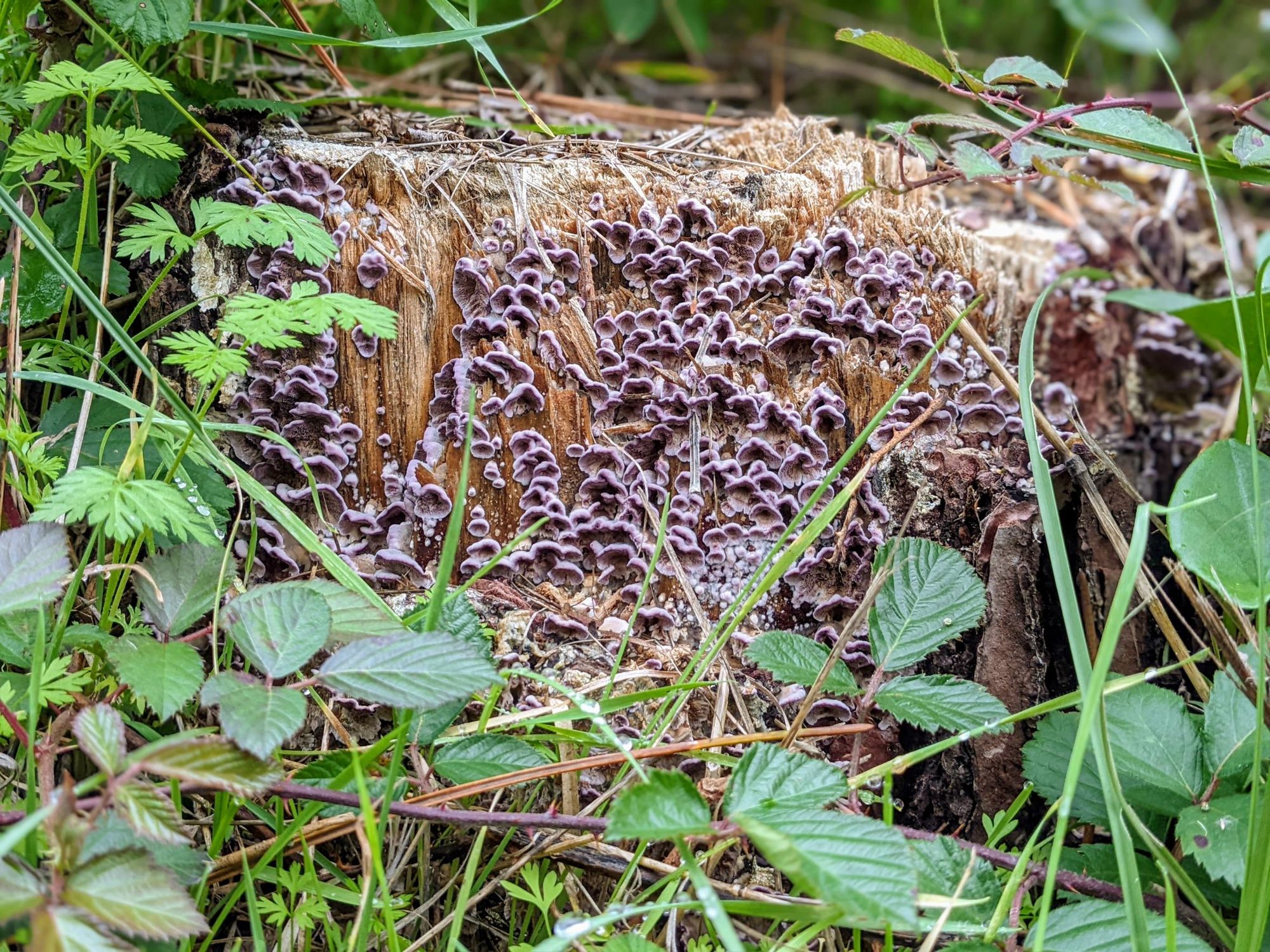


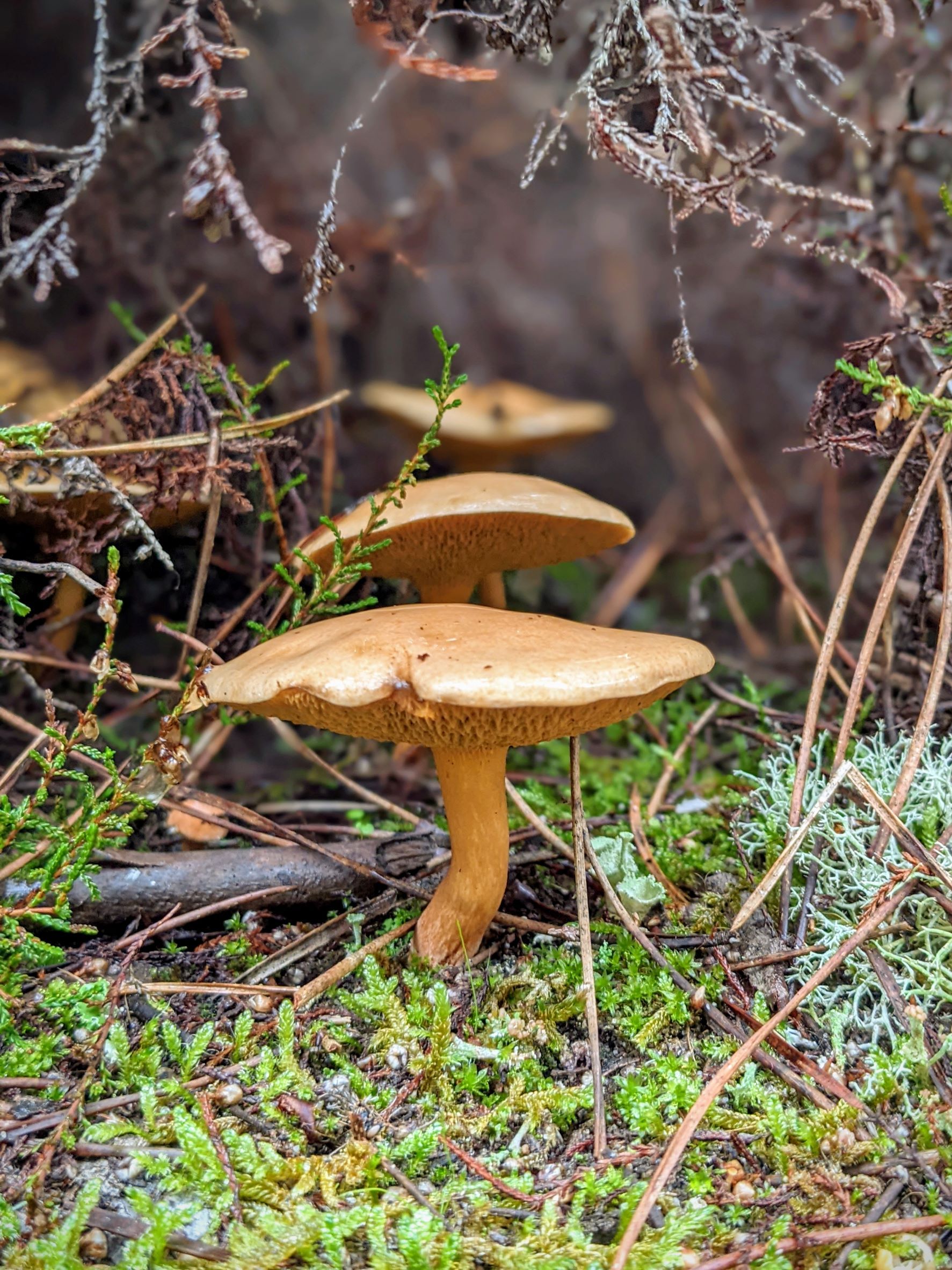

Typically, not much else manages to grow because then the trees are cut down again. Still you can find the Fern, now completely dry, adding biomass to the system.
While the gorse, the pines and eucalyptus are fire matches, the Hottentot Fig is a fire retardant and the heather can recover from fires as long as they are not too intense.
Because this cycle keeps being broken and restarted (cutting all vegetation) fertility keeps going down. I do not know – and sometimes ignorance is bliss – if chemicals are being added to these plantations. What is clear is that, looking at the soil, it looks like a desert in disguise.
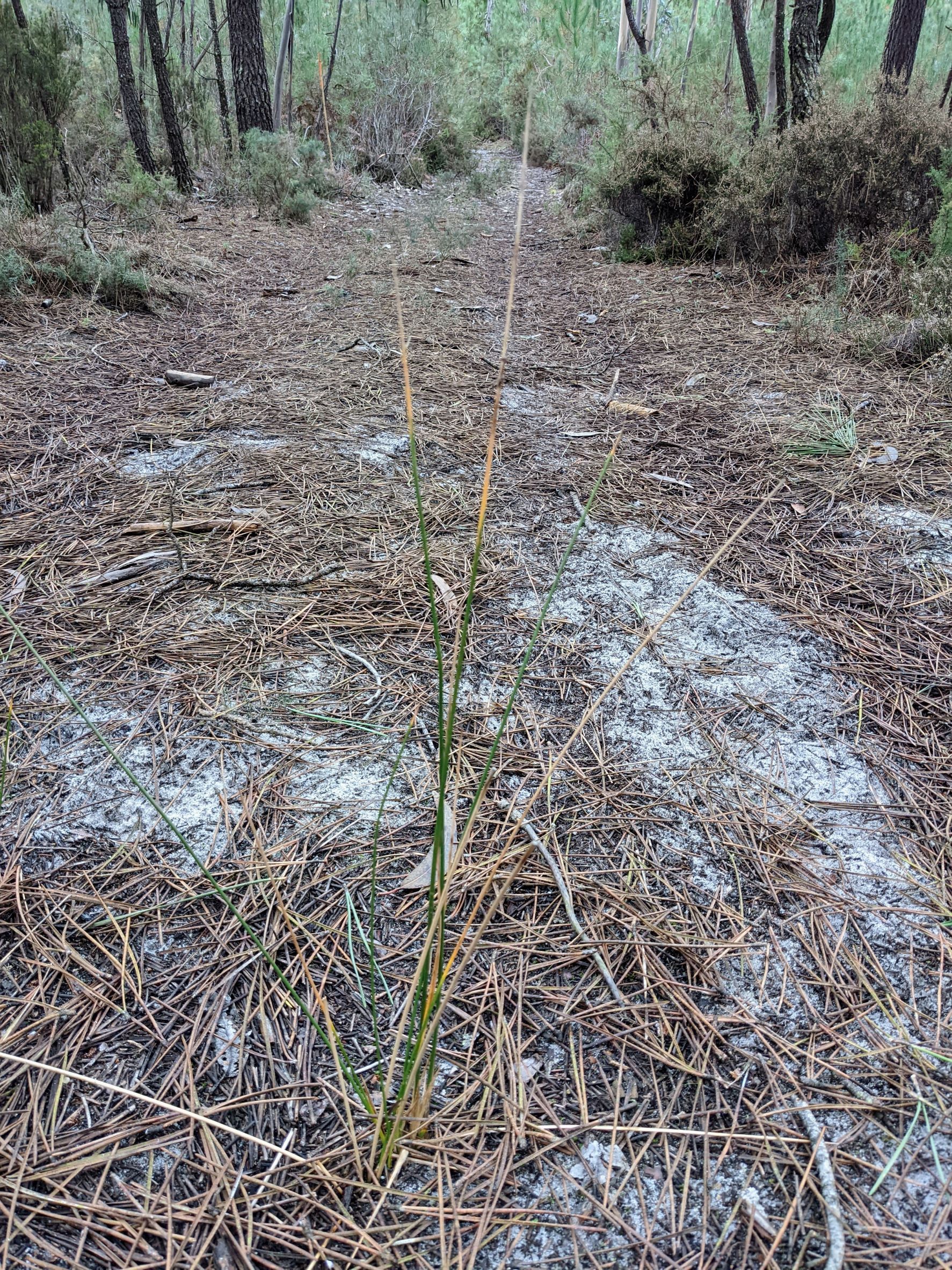
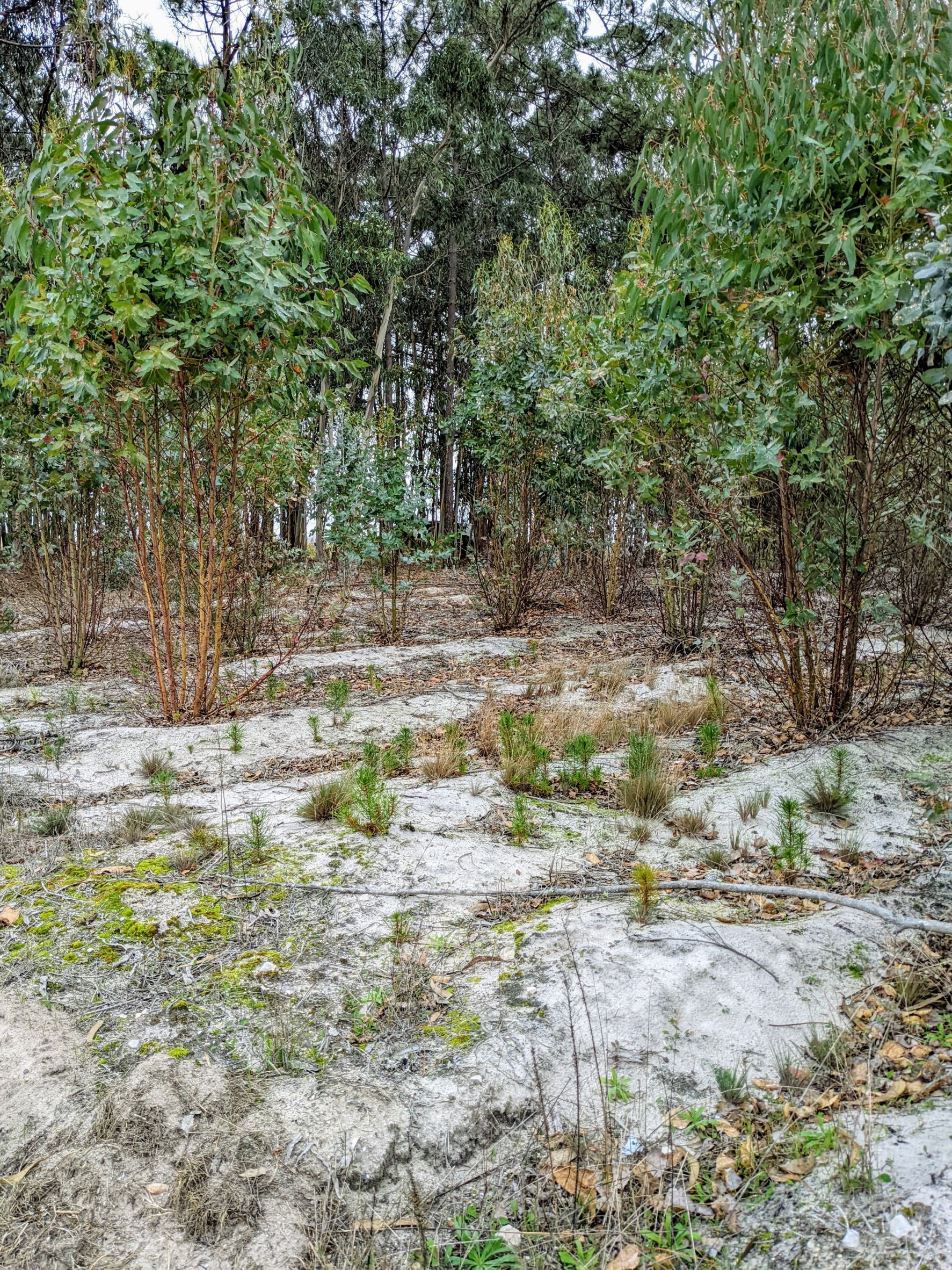
Lessons Learned
- There are very resilient pioneers species in this area, that are providing a full package service to restoring nature
- These species are either underappreciated (urze/heather) or considered pests to be eradicated
- The fern needs some shade and a lot of moisture to thrive in this area. While it can grow here, it dies back every year.
Next steps
- Keep the gorse we have in our plot. It will keep adding fertility and support pollinators through the winter. In the Summer, chop the ones closer to the south limit (where we have our fire sector, where fires are more likely to come from) and remove the branches, which burn very easily when dry. With time, these plants will be gradually replaced by other species, without our intervention, as they need full sun
- We added lots of Heather of different species and will continue to do so as needed, paying close attention to which locations they thrive in
- While we were tempted to use the Hottentot fig in our fire sector as a ground cover for our footpath, we cannot. It is illegal. We will however keep adding more succulent plants there and looking for alternatives that can take our Winter temperatures.

